The most recent PlanIt Event showcased some of the most promising early-stage start-up ideas.
From disc golf trackers to meal subscription services, there was a wide variety of unique concepts from enthusiastic entrepreneurs.
The judges for this year’s competition were:
- Rob Bennett – COO of VIATEC
- Thomas Ahn – Founder of Mad Ventures
- Lindsay Frehlick – Innovations Manager at UVic
- Ray Cao – Founder of AllSalt Maritime
- Kevin Burkett – Portfolio Manager at Burkett Asset Management
Sitting in at PlanIt is like attending commerce, biology, and an engineering lecture all at once.
You can’t help but dust off a notebook and search for a pen to take notes while the entrepreneurs are diving into their businesses.
Here are the nine businesses from this semester’s PlanIt.
Sanctuary Sneakers
The event began with a bang featuring Sanctuary Sneakers. The Founder and Sneakerhead, Eric Hasegawa, explained his business was like Trivago for high-end, collectible sneakers. It allows fellow Sneakerheads to shop for the best prices of shoes for their collections.
Did you know the market for high-end resale sneakers is a $10 billion industry? Neither did we.
If you’re interested in saving money on high-end sneakers, check out Sanctuary Sneaker’s website or visit them on Instagram and Facebook!
Famer’s Legacy Biotech
Next, we jumped straight into BIO 400 with Farmer’s Legacy Biotech, presented by Founder Pankaj Purwar. This business is determined to provide a more sustainable and healthier alternative to vegetable oil: Brahmola oil.
The impacts of farming palm and canola oil on the forests in Africa, South America, and Mesoamerica is becoming increasingly problematic. Pankaj explained Brahmola oil could help stop this since it involves genetically transforming canola to make fatty acids similar to coconut oil. This type of oil is healthier and is a sustainable way to meet the high demand for oil. Pankaj described it as the“goodness of coconut oil and its grown sustainability.”
EatCoast
The post-lunch hunger hit the judges quickly when the next Founder, Mohsin Dyer, showed off his business EatCoast.
EatCoast is an online food delivery service that provides healthy meals that adhere to dietary restrictions. A problem many students, such as Mohsin, who is an international student, and busy professionals face is learning how to cook and finding the time to do so. EatCoast, however, provides a solution to this.
For delicious, ready-made meals, join EatCoast’s waitlist to be the first to know when it launches!

MeepMeep
Have you heard of disc golf before? Well, it’s a seemingly niche sport that is actually not-so-niche and is taking the sports market by storm.
Eve Olynyk and Simon Park, Co-Founders of MeepMeep, saw a need for a Bluetooth disc golf tracker. They ran a survey, and the results confirmed that the average player spends 10 minutes per round searching for their disc. That’s 116,000 minutes per day among all disc players! But with MeepMeep, you can “search less and play more.”
Are you ready to search less and play more? Check out MeepMeep’s website and get in touch with them on Instagram!
Little Egg
With the holidays right around the corner, the next contestant’s idea was perfect. Founded by Jennifer Cawthorne, Little Egg offers a sustainable way to give a gift, such as notes, videos, or a contribution to an education fund, your children, grandchildren, etc., will remember for years to come, all while trying to “remove our focus on materials and make room for what truly matters.”
Judge Rob Bennett weighed in on his own birthday experience, saying his grandparents’ savings bond was the gift he remembered most as a kid! Not a plastic toy.
SheTrains
Next up were Co-Founders and student-athletes Tori Kalyniuk and Ella Stephen. They created SheTrains: an app that tracks women athletes’ periods, analyzes training plans and makes scientifically supported recommendations to coaches.
The idea sparked when they spoke with other female athletes and learned that 95.7% of women athletes reported that training negatively impacted their menstrual cycles. They realized that with SheTrains, women athletes can “work with their bodies and not against them!”
SJD Ceramics
“When was the last time you did something just for fun?”
As entrepreneurs, it’s easy for us to get swept up into the hustle. The answers to this question are why Sarah Davis, the Founder of SJD Ceramics, wants to expand her pottery studio business to provide fun and simple classes in the Tsawwassen area.
Her business idea makes you question when the last time was that you did something purely for enjoyment and reflect on that answer.
Are you in the Tsawwassen area and looking for a fun activity to do with your friend, family, or partner? Join SJD Ceramics’ waitlist to be the first to know when class spots open up.
ScoutBees
This past year, students searching for housing arrived at open houses with many other desperate students, only to be disappointed or scammed. Thousands, especially international students worldwide, have felt the effects of this housing crisis while trying to find a place to live.
Gaze Kasilag-Del Castillo, the Founder of ScoutBees, was one of those people.
Gaze developed her business to provide a trustworthy service for international students to vet houses by booking “scouts.” ScoutBees’ tailored niche of helping international students will set it apart from any impending competitors that enter the market.
Follow ScoutBees on Instagram to stay up-to-date with their launch!
Finally, it was time for the final contestant.
The sun had already set, and the Zoom slump had hit.
PolyV
PolyV’s unique and necessary proposition sparked some life back into the judges. The Founder of PolyV, Tong Li, proposed a lighter-weight alternative to carbon fibre. The alternative is called polymer, and it can be used to create car seats, battery casings, and so much more.
“It’s a lighter, stronger, greener solution…” said Li, which our economy needs after a recent gas crisis and the increasing effects of climate change.
Learn more about the amazing things Li on the PolyV website!
Now, it was time for the judges to finish up their scorecards, which would reveal the top 4 winners of this semester’s PlanIt competition.
But before the judges could finish tallying their scores, the line-up of extraordinary entrepreneurs and their ideas ignited conversations between the judges. How could it not?
While all the presentations were impressive, those who ranked in the top four stayed on the top of everyone’s mind throughout the four-hour event.
Now…for the results. Drum roll, please!
In first place…MeepMeep – $3000
In second place…ScoutBees – $2500
Tied for third place…PolyV – $1250
Tied for third place…Sanctuary Sneakers – $1250
Another successful round of PlanIt for the books!
We don’t know about you, but after this PlanIt, we’re feeling confident about the bright business ideas ready to illuminate our future.
The Coast Capital Innovation Centre has been made possible through a partnership between the University of Victoria and the Coast Capital Federal Credit Union. Since 2016, Coast Capital has committed over $1.5 million to support entrepreneurs and innovators at UVic.
Written and edited by Zoe Mathers


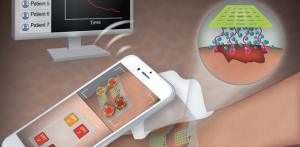 This novel solution works in conjunction with an app where the user can take a picture of the wound for an objective reading of colour changes associated with the extent of infection. This solution provides an opportunity for remote monitoring of wounds and reduces the need for patients to visit the clinic. Commercialization of this technology could provide AI-powered telemedicine and offer better patient outcomes through effective wound management.
This novel solution works in conjunction with an app where the user can take a picture of the wound for an objective reading of colour changes associated with the extent of infection. This solution provides an opportunity for remote monitoring of wounds and reduces the need for patients to visit the clinic. Commercialization of this technology could provide AI-powered telemedicine and offer better patient outcomes through effective wound management. company develops novel fibrin-based bioink that generate stable and reproducible 3D-structures. A key novel function of this innovation is the ability of the structures to remain in culture for over 30 days while maintaining a high level of cell viability and function. The technology supports a wide range of cell lines, such as induced pluripotent stem cells (hiPSCs), neural progenitor cells (NPCs), and the mesenchymal stem cells (MSCs). The applications of the novel bioink are vast including drug modeling, screening, and development of cell therapies. Axolotl Biosciences has partnered with the Elvira Lab at UVic to investigate “3D bioprinting personalized brain tissue models”. An example of one of the many partnerships Axolotl Biosciences has developed since it was founded in 2020.
company develops novel fibrin-based bioink that generate stable and reproducible 3D-structures. A key novel function of this innovation is the ability of the structures to remain in culture for over 30 days while maintaining a high level of cell viability and function. The technology supports a wide range of cell lines, such as induced pluripotent stem cells (hiPSCs), neural progenitor cells (NPCs), and the mesenchymal stem cells (MSCs). The applications of the novel bioink are vast including drug modeling, screening, and development of cell therapies. Axolotl Biosciences has partnered with the Elvira Lab at UVic to investigate “3D bioprinting personalized brain tissue models”. An example of one of the many partnerships Axolotl Biosciences has developed since it was founded in 2020. with different fabrication processes including spin coating, slot-die and blade-coating. SolariesTM Solar Cells use an emerging solar technology called perovskite. The perovskite solar cells are lightweight, flexible, high efficiency and transparent. These solar cells are top quality, and cost effective to provide greater accessibility to end-users. Not only are these solar cells more effective than their competitors, the carbon footprint to develop SolariesTM solar cells is significantly less when compared to traditional solar cells. Solaries is partnered with the Saidaminov lab and previously partnered with the Evins lab at UVic to further their research goals.
with different fabrication processes including spin coating, slot-die and blade-coating. SolariesTM Solar Cells use an emerging solar technology called perovskite. The perovskite solar cells are lightweight, flexible, high efficiency and transparent. These solar cells are top quality, and cost effective to provide greater accessibility to end-users. Not only are these solar cells more effective than their competitors, the carbon footprint to develop SolariesTM solar cells is significantly less when compared to traditional solar cells. Solaries is partnered with the Saidaminov lab and previously partnered with the Evins lab at UVic to further their research goals. DNATM technology requires only a scoop of water from the target area. The test can be used on water, soil, and sediment samples. This non-invasive test is used to protect species at risk, particularly those that are more elusive, and their habitats. Through licensing and collaboration agreements this technology is helping our partners, such as Hemmera and Bureau Veritas, expand their testing toolkits and offer an opportunity to enhance Industry’s understanding of species at risk.
DNATM technology requires only a scoop of water from the target area. The test can be used on water, soil, and sediment samples. This non-invasive test is used to protect species at risk, particularly those that are more elusive, and their habitats. Through licensing and collaboration agreements this technology is helping our partners, such as Hemmera and Bureau Veritas, expand their testing toolkits and offer an opportunity to enhance Industry’s understanding of species at risk.

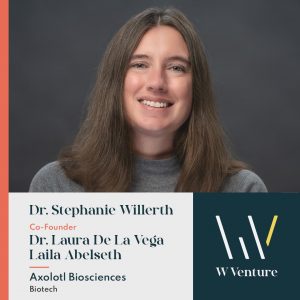 participating in the UVic summer pilot program was meeting with like-minded women as we developed our businesses. Axolotl’s biggest accomplishment so far was incorporating during the pandemic and bringing on five full-time employees for summer. We are excited that our novel bioink is now being beta tested by users in both academia and industry. We are looking forward to expanding our product portfolio and selling our bioink. In particular, we are excited about being able to bring on a full-time business manager and digital content developer this fall.”
participating in the UVic summer pilot program was meeting with like-minded women as we developed our businesses. Axolotl’s biggest accomplishment so far was incorporating during the pandemic and bringing on five full-time employees for summer. We are excited that our novel bioink is now being beta tested by users in both academia and industry. We are looking forward to expanding our product portfolio and selling our bioink. In particular, we are excited about being able to bring on a full-time business manager and digital content developer this fall.” courage and confidence in my business. The ability to meet and talk to other women founders and hear their challenges and accomplishments have been extremely helpful. The webinars were very informative, and I am looking forward to participating in more webinars. With the knowledge gained, I am going to expand my business with more confidence.”
courage and confidence in my business. The ability to meet and talk to other women founders and hear their challenges and accomplishments have been extremely helpful. The webinars were very informative, and I am looking forward to participating in more webinars. With the knowledge gained, I am going to expand my business with more confidence.”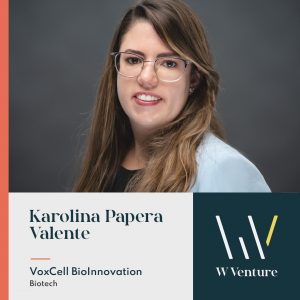 program was great! In addition to providing incredible resources, especially in financial management, I connected with an amazing group of women! My biggest accomplishments were finalizing incorporation, preparing for the PlanIt competition and having my interview for W Venture all in the same week of my PhD defence! I am most looking forward to moving from our first prototype printer model towards our re-designed model. In six to nine months, we will have our second prototype ready. In 12 months, we will be producing 3D printed parts for our collaborators in academia. In five years, we will have at least two different models of our printer with one focused on tissue engineering and a second model focused on mechanical engineering.”
program was great! In addition to providing incredible resources, especially in financial management, I connected with an amazing group of women! My biggest accomplishments were finalizing incorporation, preparing for the PlanIt competition and having my interview for W Venture all in the same week of my PhD defence! I am most looking forward to moving from our first prototype printer model towards our re-designed model. In six to nine months, we will have our second prototype ready. In 12 months, we will be producing 3D printed parts for our collaborators in academia. In five years, we will have at least two different models of our printer with one focused on tissue engineering and a second model focused on mechanical engineering.”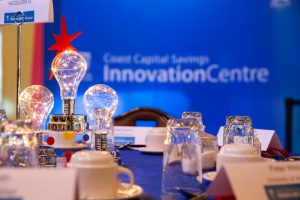 future customers will be able to make their decision about which barber they would like to choose. Zizzor might be your next option when you want to look presentation perfect.
future customers will be able to make their decision about which barber they would like to choose. Zizzor might be your next option when you want to look presentation perfect.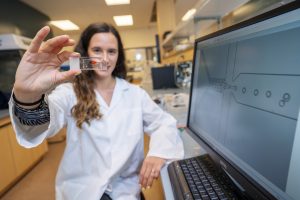 That is the typical 96 well plate, high-throughput model. We are making our technology a lot more biometric but still are able to do it in high-throughput. This technology shows promise to be able to run 900 assays per hour.
That is the typical 96 well plate, high-throughput model. We are making our technology a lot more biometric but still are able to do it in high-throughput. This technology shows promise to be able to run 900 assays per hour. industry-academic partnership is contacting an ILO with a new idea. They can connect you with relevant researchers to develop the innovation or highlight technologies ready for commercialization that offers a solution to common problems within your industry. Partnerships can begin early in the research phase, part way through development when a technology needs to be optimized, or when the technology is ready for licensing.
industry-academic partnership is contacting an ILO with a new idea. They can connect you with relevant researchers to develop the innovation or highlight technologies ready for commercialization that offers a solution to common problems within your industry. Partnerships can begin early in the research phase, part way through development when a technology needs to be optimized, or when the technology is ready for licensing.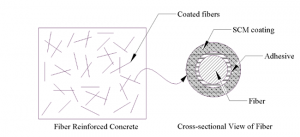 [about 8% of the total global carbon dioxide]. There are many other SCMs some of which are very expensive. There is also silicafume which is an exceptional material that has the ability to remove lime. Limestone is put into the mixture to make concrete, but the limestone turns to lime and actually makes concrete less durable. When you add silicafume to the concrete it reacts with the lime and reduce the amount of lime in the concrete. What is great is the reaction between lime and silica produce a really amazing product that reduces deterioration.
[about 8% of the total global carbon dioxide]. There are many other SCMs some of which are very expensive. There is also silicafume which is an exceptional material that has the ability to remove lime. Limestone is put into the mixture to make concrete, but the limestone turns to lime and actually makes concrete less durable. When you add silicafume to the concrete it reacts with the lime and reduce the amount of lime in the concrete. What is great is the reaction between lime and silica produce a really amazing product that reduces deterioration.